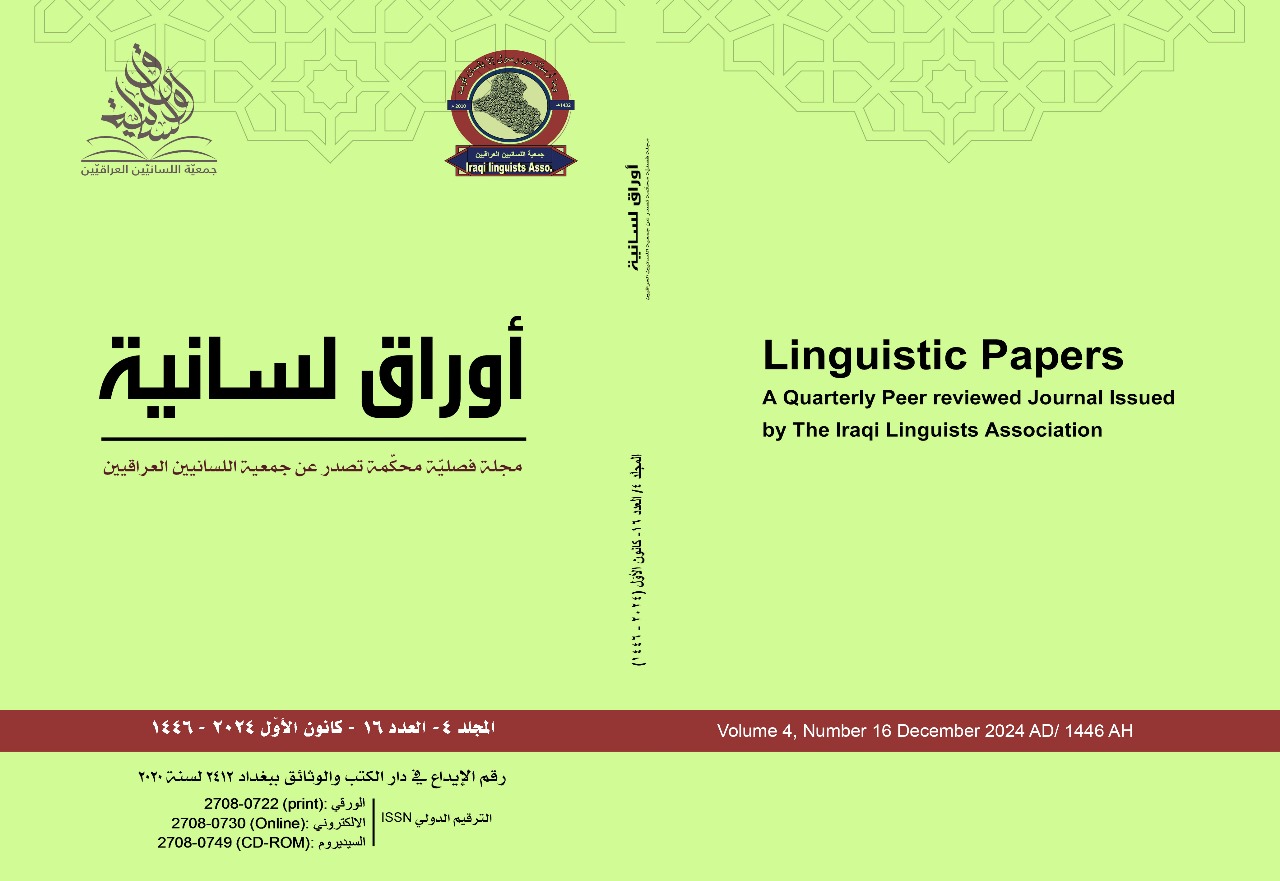Abstract
Argumentative discourse serves as the central means of conveying ideas and solidifying intentions in the recipient's mind, as it exerts a powerful influence in persuading others. It represents a conscious effort by the speaker to impact the audience through various means of stimulation and persuasion, ultimately guiding them toward adopting a particular opinion, responding to a specific request, or reconsidering their stance to construct a new perspective.
Motivated by a desire to explore this topic, I have endeavored to uncover its intricacies and examine its key features and classifications through a modern lens. This study aims to investigate the persuasive argumentative mechanisms in the speech of Imam Al-Hasan Al-Mujtaba (PBUH) by employing concepts and principles from pragmatic research, such as the Cooperative Principle and Speech Act Theory. Additionally, the study utilizes argumentative theories' concepts and tools in analysis, hoping to shed light on the most significant persuasive mechanisms employed by the Imam (PBUH) in his dialogues. It also examines the strategies he used to refute opponents, even in the face of their obstinacy and resistance.
The study is structured into two main sections: the first presents a theoretical introduction that outlines relevant concepts and foundational principles, including pragmatics and argumentation. The second section delves into the most crucial linguistic persuasive mechanisms that Imam Al-Hasan Al-Mujtaba (PBUH) employed in his argumentative discourse, highlighting their role in achieving persuasion, attracting the audience, and ultimately leading to their submission to the intended message.
The study concludes with key findings.
All praise is due to Allah, first and last, and may peace and blessings be upon His Messenger and His noble household, forever.
Motivated by a desire to explore this topic, I have endeavored to uncover its intricacies and examine its key features and classifications through a modern lens. This study aims to investigate the persuasive argumentative mechanisms in the speech of Imam Al-Hasan Al-Mujtaba (PBUH) by employing concepts and principles from pragmatic research, such as the Cooperative Principle and Speech Act Theory. Additionally, the study utilizes argumentative theories' concepts and tools in analysis, hoping to shed light on the most significant persuasive mechanisms employed by the Imam (PBUH) in his dialogues. It also examines the strategies he used to refute opponents, even in the face of their obstinacy and resistance.
The study is structured into two main sections: the first presents a theoretical introduction that outlines relevant concepts and foundational principles, including pragmatics and argumentation. The second section delves into the most crucial linguistic persuasive mechanisms that Imam Al-Hasan Al-Mujtaba (PBUH) employed in his argumentative discourse, highlighting their role in achieving persuasion, attracting the audience, and ultimately leading to their submission to the intended message.
The study concludes with key findings.
All praise is due to Allah, first and last, and may peace and blessings be upon His Messenger and His noble household, forever.
Keywords
discourse
linguistic argumentation
pragmatics
Abstract
يعدّ الخطاب الحجاجي البؤرة المركزية في إيصال الأفكار وتثبيت المقاصد في ذهن المتلقي، إذ ينطوي على أثرٍ فعَّالٍ في إقناع الآخرين؛ كونه محاولة واعية من المتكلّم للتأثير في المتلقي عبر وسائل الإثارة والتأثير، ومن ثمَّ دفعه نحو تبني رأي ما، أو الاستجابة لطلب معين أو لتغيير رأيه لبناء موقف جديد، فآثرت الخوض في هذا الموضوع؛ محاولة مني الكشف عن خباياه، والوقوف على أهمِّ سماته وأنواعه بمنظور حداثي، لذا تسعى الدراسة الكشف عن الآليات الإقناعية الحجاجية في خطاب الإمام الحسن المجتبى (ع) بتوظيف بعض ما توصَّل إليه البحث التداولي من مفاهيم وقوانين كمبدأ التعاون، ونظرية أفعال الكلام، واستثمار ما قدَّمته النظريات الحجاجية من مفاهيم وأدوات في التحليل؛ أملاً في إضفاء إشراقة موجزة لأهم الآليات الاقناعية التي وظّفها الامام الحسن (ع) في محاوراته مع الآخرين، والطرق التي استعملها (ع) في افحام المتلقي على الرغم من عناده ومكابرته، فجاءت الدراسة على مبحثين: الأول كان توطئة نظرية نرمي بها إلى إلقاء ضوء على بعض المفاهيم والاسس النظرية ذات الصلة بمحتوى الدراسة فتطرقنا إلى: مفهوم التداولية والحجاج، أمَّا المبحث الثاني: فكان لأهم الآليات الاقناعية اللغوية التي استثمرها الإمام الحسن المجتبى (ع) في خطابه الحجاجي، ودورها في تحصيل الاقتناع واستمالة المتلقي ومن ثمّ اذعانه لفحوى الخطاب الموجّه، وخُتِمَت الدراسة بأهم ما توصلنا إليه من نتائج. والحمد لله أولاً وآخراً والصلاة والسلام على رسوله وآله أبداً.
Keywords
الخطاب، التداولية، الحجاج اللغوي
